Rajasthan has long embedded itself as one of India’s paradises of plenty when it comes to shopping. Even shopaholics are defeated by the astonishing range of goodies to fill their bags, time and time again, visit upon visit.
Now let’s just walk away from the bustling hubs of its legendary bazaars of antiquity with their many allurements. Instead, let us go, you and I, to explore what the erstwhile royal cities of Jaipur and Udaipur have in store for us with their curated collectives, the shiny showpieces of the local NGOs, and centuries-old offerings from their craft villages.
Craft Villages
Standing head and shoulders above them all is the Shilpagram in Udaipur. This lazy sprawl of this exciting craft village lies in proximity to the shoreline of the tranquil Fatheh Sagar Lake. The idea behind this unique craft village setting was for visitors to be able to explore the riches or Rajasthan’s exceptional artisanal wealth, all under one roof as it were. It served the dual purpose of allowing the artisans to showcase their ancestral crafting skills and simultaneously be in apposition to sell their products directly to customers without the intervention of a middleman. That this concept has found immense favour amongst both the artisans and the customers, is reflected in the Shilpagram’s growing stature as a major tourist attraction in this city of lakes and fairytale palaces.
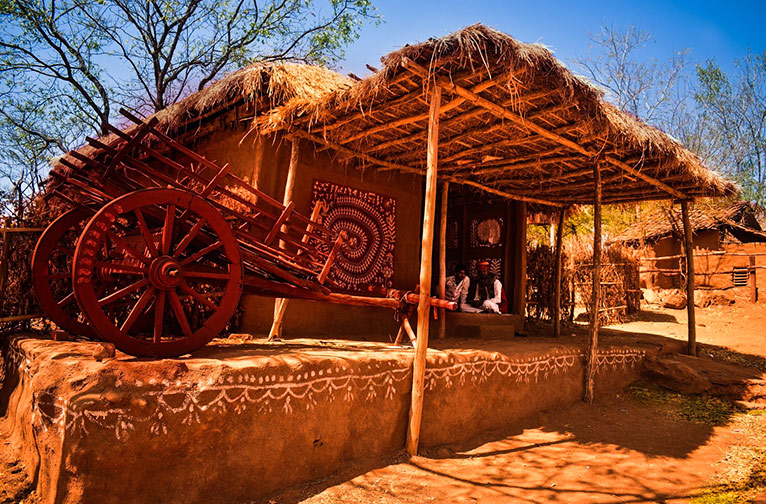
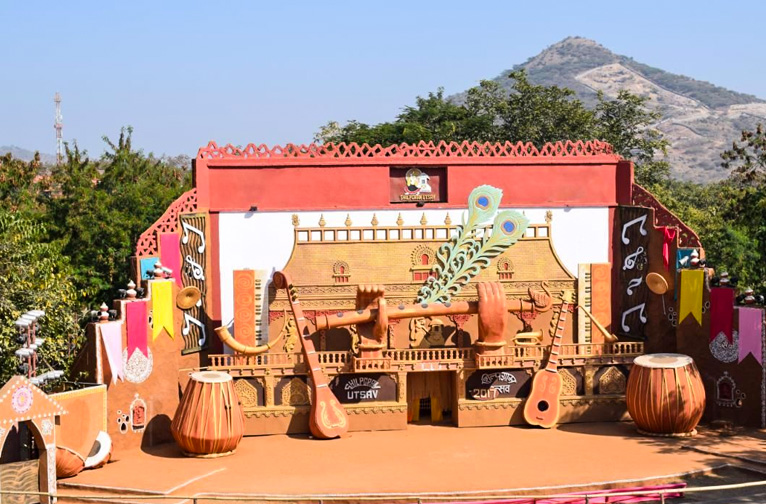
What adds heft to Shilpagram’s offerings is the exceptional range of artisanal skills one may witness, not only from Rajasthan, but also from other states in the country. From pottery to woodwork, from weaving to embroidery, from leatherwork to metalwork, from traditional paintings to marble and stone sculpting…there is no dearth of India’s generations-old -old art and craft traditions on show here.
About 26 different types of huts form the nucleus of the craft village’s skilled outputs. Each of these huts represents different states in the country, be it Rajasthan, Gujarat, Maharashtra or Goa.
The Amer Kunda Craft Village near Jaipur is a spanking new platform for artisans to come together to showcase Rajasthan’s diverse handcrafting skills and splendour. Generations ago, the artisans who worked on the building of the Amer Fort back in the late 16th century, under the rule of Raja Man Singh I, settled in the area around the fortress. One such spot was Amer Kunda village, which gained fame for its handicrafts, including block printing, pottery, jewellery making, and textile weaving, all of which was patronised by the royals and nobility.
The revival of these crafts has been a long time in coming, given the devastating British influences of modernisation on hand crafting skills. The bustling lanes of the village are a treasure trove for visitors looking for an immersive experience of Rajasthan’s artisanal world.
Close to Jaipur, Samode village is notable for its wonderful mirror work and embroidery. Even kids from an early age are inducted into the family crafting traditions, a growing imperative to keep this ancestral skill from dying out. Another notable skill of the villagers here is the fine art of miniature painting. Buying directly from the artists serves as a great impetus for the local economy.
Sanganer and Bagru villages, near Jaipur have a long and precious history of blockwork printing, done the traditional way with vegetable dyes. Lending your support to these sustainable practices will ensure the organic growth of the traditions for generations to come.
A half-hour drive out of Nathdwara lies Molela village, where you will get to explore the distinctive terracotta plaques and figurines of its 15th and 16th generation potters. So famous are their traditional works that they even lure Bhil tribals from Rajasthan, and Mina and Garasiya tribesmen from as far away as Gujarat and Maharashtra. The votive plaques Molela makes for the protection of homes and families from disease and misfortune are the hot sellers with these communities. The terracotta pottery of Molela, too is finding new avenues to make its mark in the contemporary world. You can pick up terracotta plaques, many of which feature scenes from everyday life, local deities, or Hindu mythology.
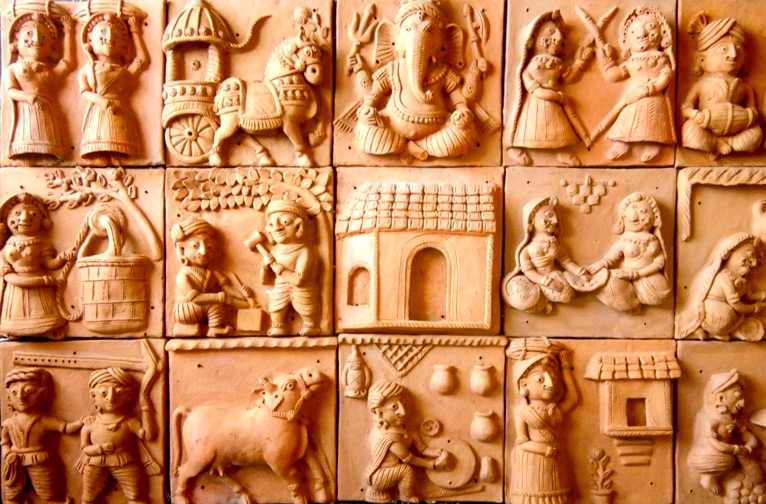
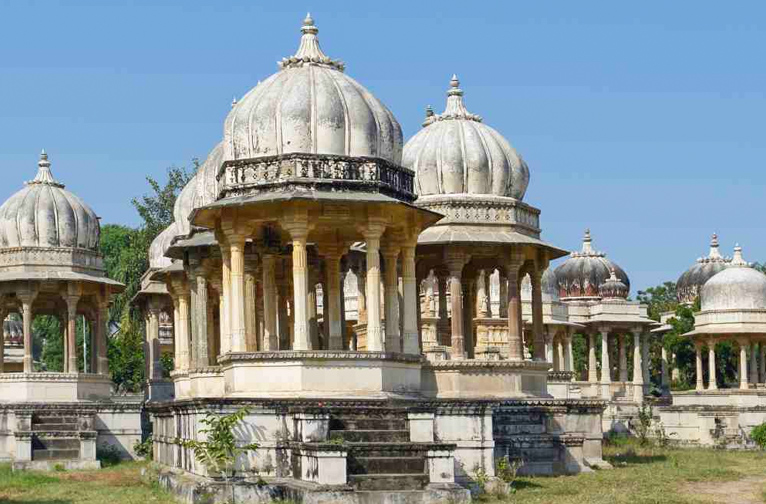
Do take a trip to Ahar village near Udaipur which has notched it up high on Rajasthan’s textile traditions for its beautiful Dabu block printing work, a form of the mud-resist dyeing technique. natural materials like mud, lime, gum and natural dyes are used in Dabu printing techniques to create those intricate patterns on cloth; indigo dye is a favourite. Aavaran has played a pivotal role in reviving and sustaining the traditional craft of Dabu. The collection, which also features garments, home furnishings, and accessories, uses Indigo and a selection of purely natural dyes that are painstakingly made with a commitment to being sustainable and eco-friendly.
Artisanal Works, Shops, And Museums
Close to the Amer Fort, near Jaipur, is the wonderful Anokhi Museum of Hand Printing, where you can enjoy a hands-on exposure to the ancient traditions of block printing of Sanganer and Bagru. The small shop attached to the museum offers carefully curated stock including limited edition clothing, small accessories and paper products. The exhibitions held at the museum serve as a window to these hand-made textiles and unique pieces inspired by the museum’s collection. What you will love is that most items are exclusive to the museum shop. From fabric by the yard to soft toys and games, from printing blocks to handmade paper goods, they have it all. By the way, Anokhi has shops throughout India and can be found in small stores and online businesses dotted across the globe.
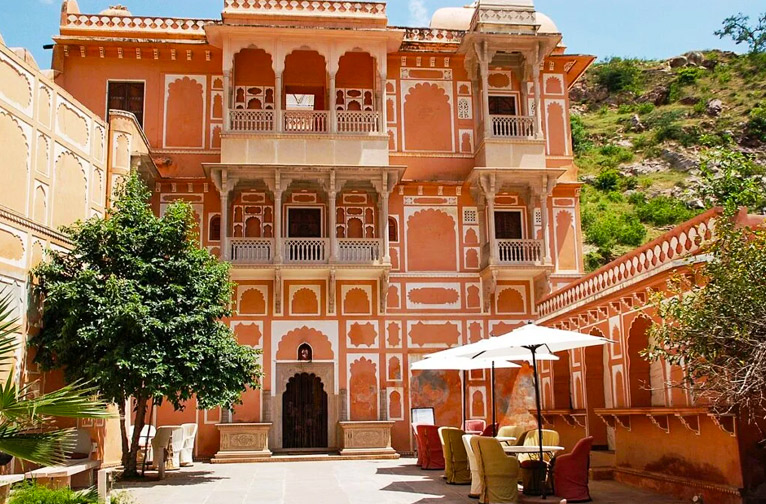
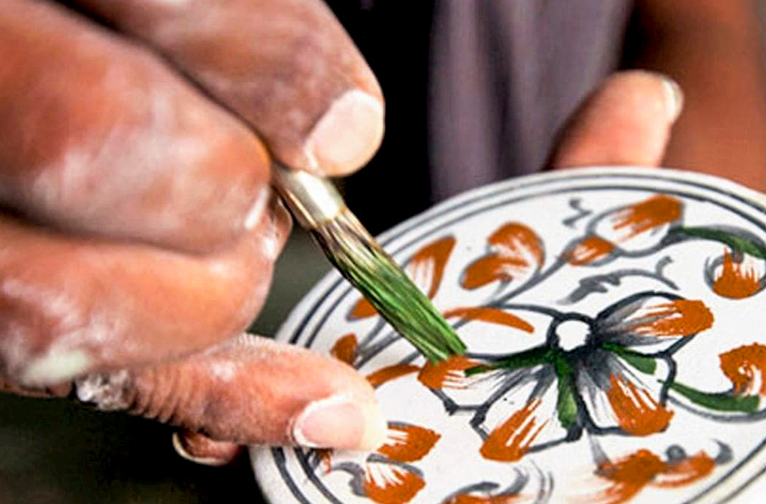
Jaipur has long been associated with Blue Pottery, which is rooted in the 14th-century Turko-Persian hand-crafting traditions. The Mughal courts in the 17th century introduced this fine pottery tradition to Jaipur. influences from. You will have a truly rewarding experience watching the Jaipur-based award-winning. master craftsman, Gopal Saini, showcases his skills in the delectable art form at his studio in the city. He had the privilege of being trained by Kripal Singh Shekhawat, a renowned craftsman and ceramist; he was also a Padmashree award winner for reviving this exclusive craft.
Blue Pottery is not made from clay; instead, quartz stone and glass are the primary ingredients. Blue Pottery uses low-fired glaze, which makes it distinct from other forms of pottery. Each item of Blue Pottery goes through 42 manual processes throughout 20-25 days before completion. At Mr Saini’s studio, you’ll get a great opportunity to try your hand at this exceptional craft, mentored by a master to create your own plate as a personal souvenir, with a design of your choice and then watch as the magic unfolds when the bright turquoise hues come into play. Gopal Saini has mentored numerous lovers of the craft from India, Japan, Germany, Russia and the United States, et al.
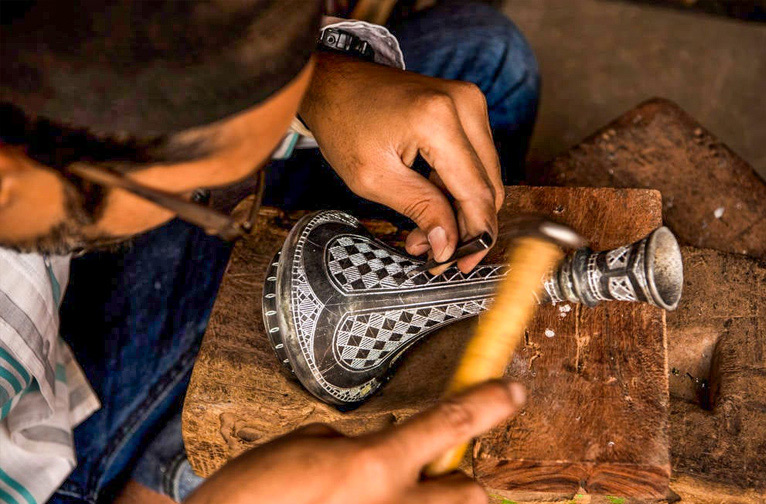
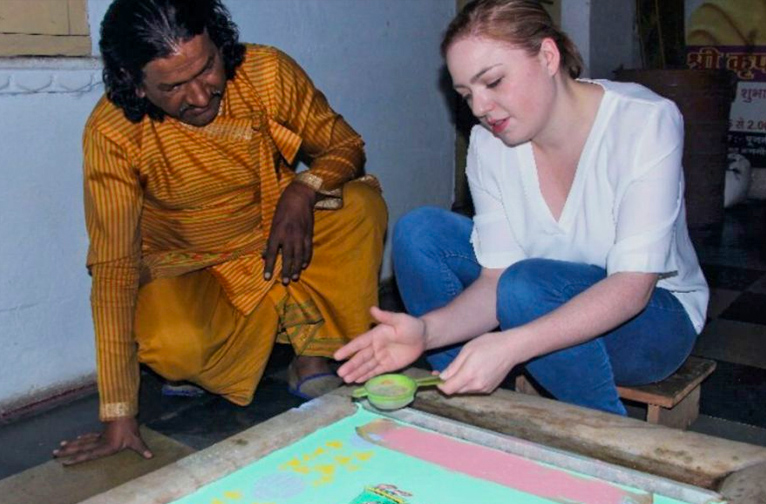
Koftgiri, or the fine art of damascening, lavishly used in embellishing the surface of armour, horse armour, shields and helmets, and handles of swords, daggers, etc. of Rajput warriors, is gaining fresh interest by visitors. For generations on end Mewar’s Sigligar community has practiced this beautiful craft which involves the inlay of light-coloured metal such as silver or gold on dark metal in exquisite designs. Traditionally the craft was done on Damascus steel, considered invincible. There are still a few families in Udaipur who still practice this skill. One Udaipur-based family of repute is that of the late Shri Rajesh Gahlot and his wife, Shyamlata Gahlot, both recipients of numerous national and international awards for their exceptional work. One can make purchases online at https://ruralhandmade.com/ , which is dedicated to preserving this craft.
An artform worthy of your time in Udaipur is the unique art of “Jal Sanjhi”, or Water Art. A chief proponent of this exquisite art is the Udaipur- based Rajesh Vaishnav, the 19th generation Jal Sanjhi artist whose works have created ripples globally.
This traditional art of painting on water, which is dedicated to Lord Krishna, involves the use of a canvas of water, natural colours and stencils made of thin rice paper. Stencils of Lord Krishna are placed over water collected in a vessel and the colours are sprinkled over the stencil cuts. This requires quite a few sprinklings before the colours set.
The art form goes back at least five centuries in the annals of Vaishnav’s family history. Follow the serpentine lanes near Jagdish Chowk, to get to Jal Sanjhi Temple on Kalash Marg to meet this unique artist; the house stands cheek by jowl with the 500-year-old Shri Govardhan Nath Ji temple. You will simply love trying your hand at this unique art form, mentored by a skilled artist.
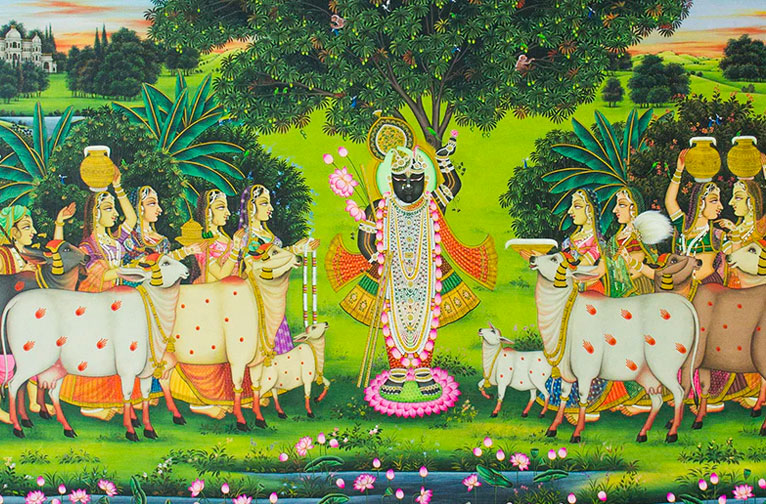
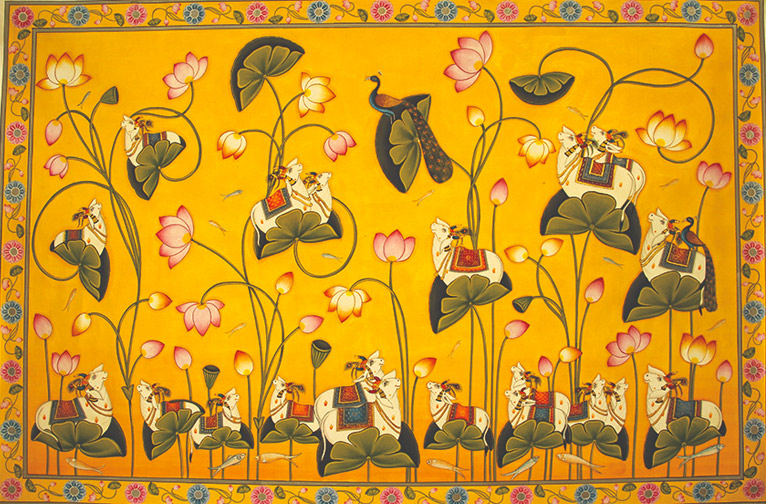
Take a short drive out of Udaipur to Nathdwara, famed for its beautiful Shrinathji’s temple devoted to Lord Krishna. The temple has been pivotal in driving the local economy with brisk sales of the legendary Pichwai paintings, which have for centuries served as a backdrop to the deity in the shrine. Wander the lanes of Chitrakaron Ka Mohalla in Nathdwara to explore the wonderful work being carried out by these Pichwai artists. There was a time, from way back in the 17th century, these lanes housed numerous families, whose ancestors originally migrated here from Mathura and Vrindavan, and kept alive this traditional devotional art form. These devotional paintings on cloth, are created with natural mineral colours. Harikant and Vishnu Harnarayan Sharma, who are Nathdwara’s 8th generation pichwai painters, have the prestigious task of painting the pichwai for the Shrinathji Temple.
NGOs driving support of local artisanal practices
Founded in 1988, Sadhna has grown from a small group of 15 artisans into a collective of over 700 home-based women working in the rural villages of Rajasthan. Specializing in patchwork, appliqué, and Tanka embroidery, Sadhna empowers women through fair trade, training, and sustainable livelihoods. Heading out from Udaipur to the temple town of Delwara let your footsteps bring you to the tiny hamlet of Kamli Ka Guda, where the women are bent over the work, brought in by orders for their special embroidery skills. Check out the Sadhana handicrafts store.
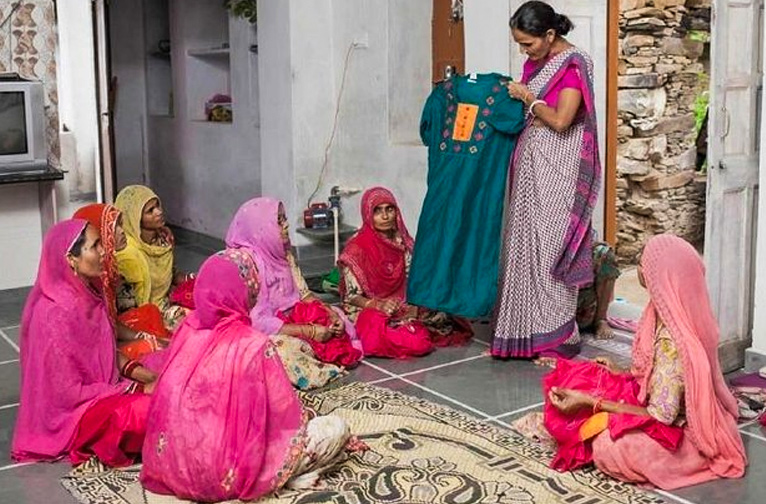
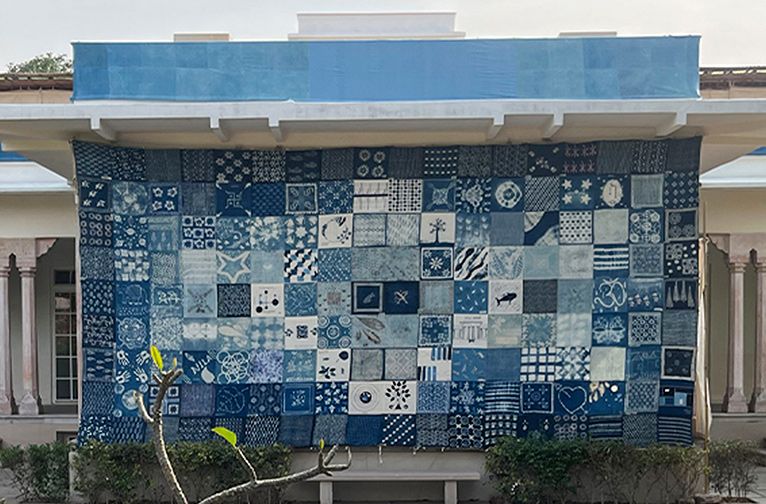
Nila is a non-profit organization founded by Carole Bamford to support sustainable craft practices and artisan communities in Jaipur; it engages with and supports a gamut of traditional craft practices such as hand block, dabu and natural screen printing; a wide range of embroidery techniques; ceramics; basketry; eco-printing and handmade paper making. Do visit the Nila House in C - Scheme, in Jaipur. A nucleus for sustainable craft practices, it is a buzzing hot spot as a cultural center, museum, and workshop space. You can attend a workshop, support artisans, and enjoy lively cultural exchanges. The shop at Nila House is stocked for the season. On offer are home textiles, clothes and accessories from the in-house collection.
The Princess Diya Kumari Foundation (PDKF) promotes and revives heritage crafts of Rajasthan. It works with disadvantaged women by opening up avenues of skill building and livelihoods. The Foundation provides training in gota patti, appliqué embroidery, soft toy making, hand embroidery, thread work and machine stitching.
There are countless opportunities to explore Rajasthan’s amazing handicrafts heritage. Word of mouth too spills the beans on hidden gems you've never heard of. Go exploring beyond the bazaars and enrich yourself in these shining artisanal pursuits that go back generations in time.